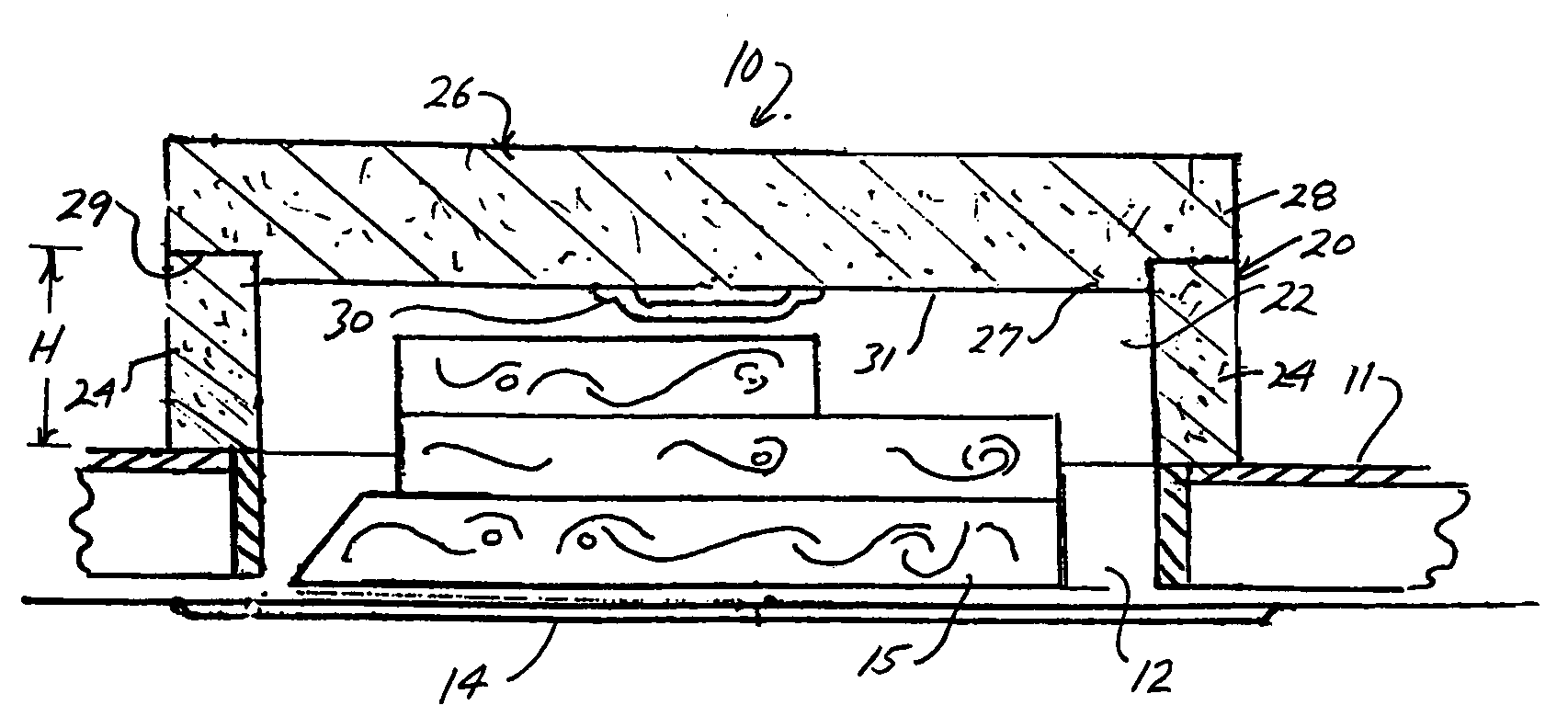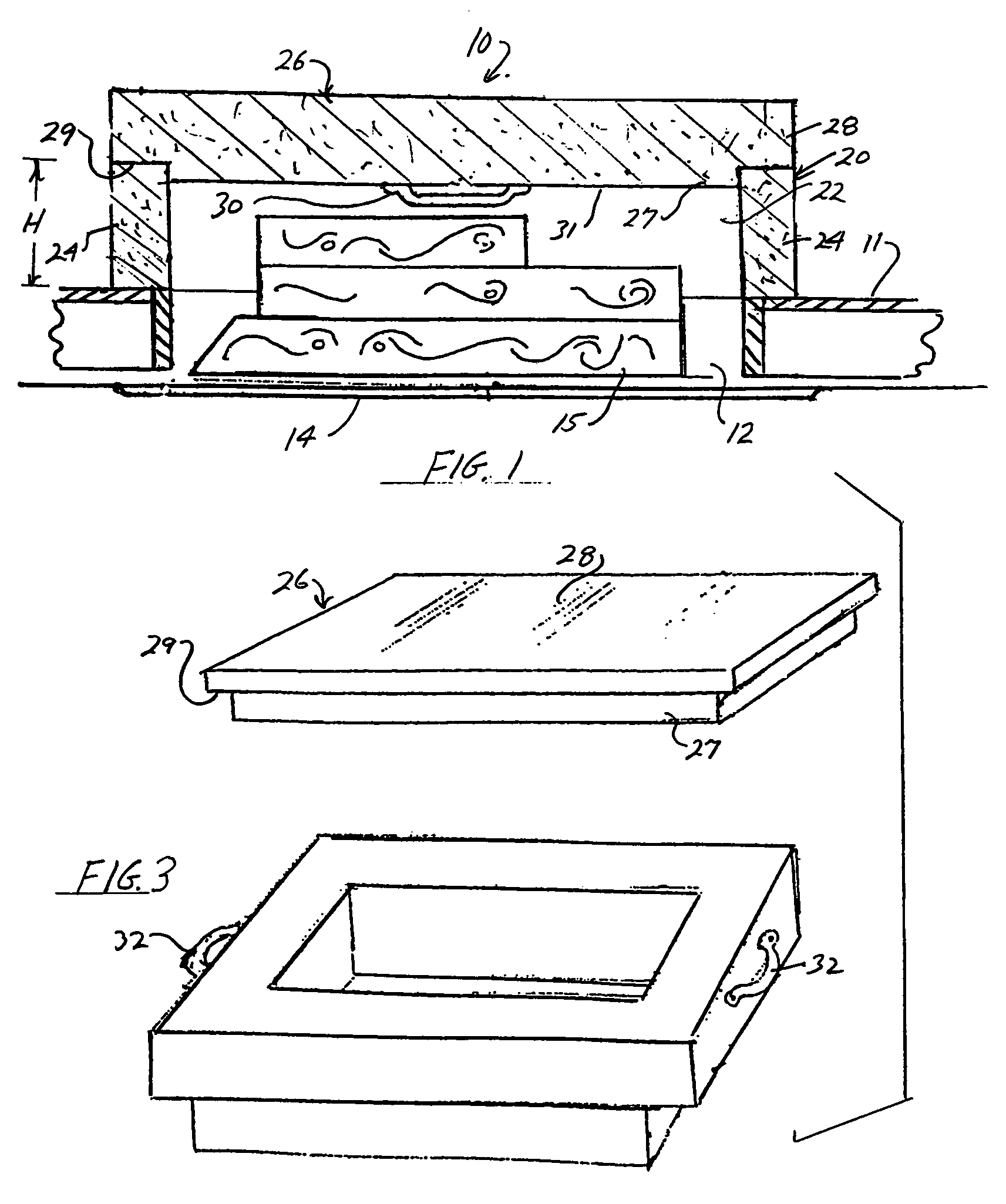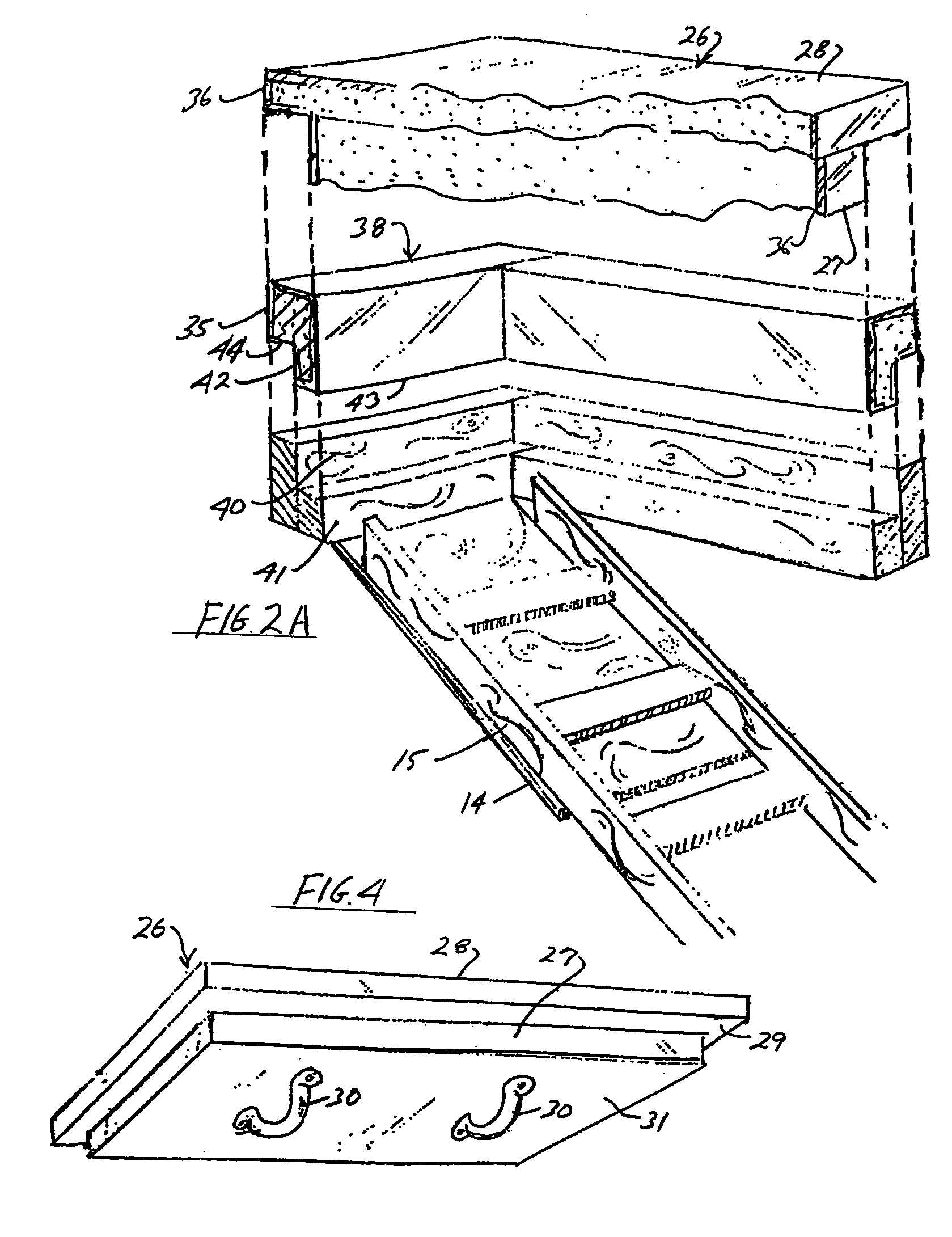Insulation cover for attic closures
a technology for attic closures and insulation covers, which is applied in the field of attic closures, can solve problems such as gaps in building insulation, and achieve the effect of maximum flexibility and easy maneuverability of devices
- Summary
- Abstract
- Description
- Claims
- Application Information
AI Technical Summary
Benefits of technology
Problems solved by technology
Method used
Image
Examples
Embodiment Construction
[0036]Although the present invention will be described hereinafter with particular reference to the accompanying drawings, it is to be understood at the outset that it is contemplated that the present invention may be varied in specific detail from that illustrated and described herein while still achieving the desirable characteristics and features of the present invention. Accordingly, the description that follows is intended to be understood as a broad enabling disclosure directed to persons skilled in the applicable arts, and is not to be understood as being restrictive.
[0037]With specific reference to FIGS. 1-6 a first embodiment of the present invention is disclosed. In FIG. 1 an insulated cover 10 for an attic closure is shown as being mounted so as to rest on an attic floor 11 in surrounding relationship with respect to an access opening 12 into an attic. As shown, the attic is normally closed by a trap door 14 which may, in some instances, be formed as a part of a fold down...
PUM
 Login to View More
Login to View More Abstract
Description
Claims
Application Information
 Login to View More
Login to View More - R&D
- Intellectual Property
- Life Sciences
- Materials
- Tech Scout
- Unparalleled Data Quality
- Higher Quality Content
- 60% Fewer Hallucinations
Browse by: Latest US Patents, China's latest patents, Technical Efficacy Thesaurus, Application Domain, Technology Topic, Popular Technical Reports.
© 2025 PatSnap. All rights reserved.Legal|Privacy policy|Modern Slavery Act Transparency Statement|Sitemap|About US| Contact US: help@patsnap.com



